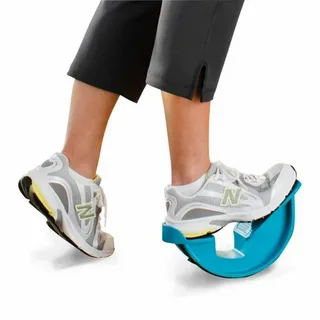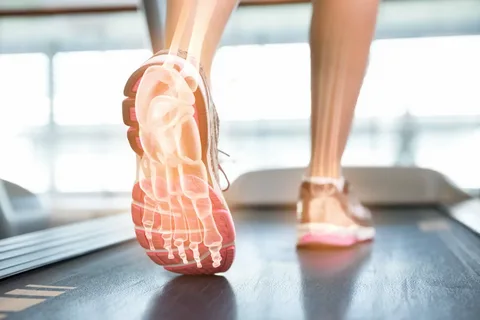If you suffer from plantar fasciitis, you know how painful and debilitating it can be. Fortunately, relief may be in sight with the help of Doctor Recommended Shoes Plantar Fasciitis. In this blog post, we’ll explore why the right shoes are so important for dealing with this condition, the various types of shoes available, and tips for finding the best pair to help you find relief.
What is Plantar Fasciitis?
Plantar fasciitis is a common foot condition that causes pain in the heel and bottom of the foot. It occurs when the plantar fascia, a thick tissue band connecting the heel bone to the toes, becomes inflamed or strained. It can happen due to excessive stress or pressure on the foot, such as running, standing for long periods, or wearing improper footwear.
The pain of plantar fasciitis is typically sharp and stabbing, usually worse in the morning or after long rest periods. It can also be aggravated by activities that involve repetitive impact on the feet, like running or jumping.
While plantar fasciitis can be a frustrating and painful condition, the good news is that it is usually treatable with conservative methods. Rest, ice, and over-the-counter pain medications can help to reduce inflammation and manage symptoms. Stretching exercises and physical therapy can also be effective in relieving pain and improving flexibility in the foot.
One important aspect of treating plantar fasciitis is wearing the right shoes. Shoes that provide proper arch support, cushioning, and stability can help to alleviate pressure on the plantar fascia and promote healing. These shoes are designed to support the foot arch, absorb shock, and distribute weight evenly across the foot.
Symptoms of Plantar Fasciitis
Plantar fasciitis can be identified by its specific symptoms, varying in severity from person to person. The most common symptom is heel pain, typically worse in the morning or after periods of rest. This pain may feel sharp or stabbing and can radiate along the bottom of the foot. It may also be aggravated by standing, walking, or running activities.
Another symptom of plantar fasciitis is stiffness or tightness in the foot, particularly in the morning or after periods of inactivity. Some individuals may also experience swelling or inflammation in the heel area. It is important to note that the pain of plantar fasciitis may improve throughout the day with activity but can worsen again after prolonged periods of standing or walking.
If you suspect you may have plantar fasciitis, it is important to consult with a healthcare professional for an accurate diagnosis. They can evaluate your symptoms, conduct a physical examination, and recommend appropriate treatment options.
Causes of Plantar Fasciitis
Plantar fasciitis can occur for various reasons, but the most common cause is excessive strain or pressure on the plantar fascia. It can be due to several factors, including:
- Overuse: Engaging in activities that put repetitive stress on the feet, such as running or jumping, can lead to plantar fasciitis. The constant impact can cause tiny tears in the plantar fascia, leading to inflammation and pain.
- Poor Foot Mechanics: Flat feet or high arches can contribute to plantar fasciitis. Flat feet can cause the plantar fascia to stretch excessively, while high arches can put increased pressure on the heel.
- Improper Footwear: Wearing shoes without proper support, cushioning, or stability can contribute to plantar fasciitis. Shoes worn out or not fitting properly can also exacerbate the condition.
- Obesity: Carrying excess weight can put additional stress on the plantar fascia, increasing the risk of developing plantar fasciitis.
- Age: Plantar fasciitis is more common in middle-aged individuals, although it can occur at any age.
- Certain Activities: Activities that involve prolonged standing, such as working on your feet for long hours, can increase the risk of developing plantar fasciitis.
How Can Doctor Recommended Shoes Help?
Doctor-recommended shoes can be a game changer when finding relief from plantar fasciitis. These specially designed shoes provide the support, cushioning, and stability your feet need to alleviate pressure on the plantar fascia and promote healing.
One of the key ways that doctor-recommended shoes help is by providing proper arch support. The arch of your foot absorbs shock and distributes weight evenly across your foot. When you have plantar fasciitis, your arch may be strained or flattened, causing added stress on the plantar fascia. Doctor-recommended shoes have built-in arch support that helps to maintain the natural shape of your foot and reduce the strain on the plantar fascia.
Another important feature of these shoes is cushioning. The extra padding and cushioning in the heel and forefoot areas help to absorb shock and reduce the impact on your feet. Engaging in high-impact activities like running or jumping can be especially beneficial.
In addition to arch support and cushioning, doctor-recommended shoes also offer stability. They have a firm midsole that helps to control excessive foot movement and prevents your foot from rolling inward or outward, which can put additional stress on the plantar fascia.
Features of Best Golf Shoes For Plantar Fasciitis
When it comes to finding the Best Golf Shoes For Plantar Fasciitis , there are a few key features you should look for. First and foremost, you’ll want to find a shoe that offers excellent arch support. The arch support will help alleviate pressure on the plantar fascia and stabilise your foot while swinging the club. Look for shoes with a contoured insole or built-in arch support.
Another important feature to consider is cushioning. Golf shoes with ample cushioning in the heel and forefoot areas will help absorb shock and reduce the impact on your feet as you walk the course. It can make a big difference in alleviating the pain and discomfort associated with plantar fasciitis.
Additionally, you’ll want to choose a golf shoe that provides good stability and traction. Look for shoes with a sturdy outsole and a good course grip. It will help prevent your foot from sliding or rolling, which can put additional strain on the plantar fascia.
Other Treatments for Plantar Fasciitis Relief
While doctor-recommended shoes for plantar fasciitis can be crucial to finding relief, other treatment options can complement their use. One effective treatment for plantar fasciitis is stretching exercises. These exercises can help to loosen and strengthen the muscles in your feet and calves, relieving tension on the plantar fascia. A few simple stretches to try include calf stretches, toe stretches, and plantar fascia stretches.
Physical therapy can also be beneficial for treating plantar fasciitis. A physical therapist can assess your condition and develop a personalized treatment plan that may include exercises, manual therapy techniques, and other modalities to help reduce pain and improve flexibility.
Another alternative treatment option to consider is using orthotics or shoe inserts. These devices can provide additional support and cushioning to alleviate pressure on the plantar fascia. You can find over-the-counter orthotics or custom orthotics made by a podiatrist or orthopedist.
Sometimes, your healthcare provider may recommend other treatments, such as night splints, which keep your foot in a stretched position. At the same time, you sleep, or extracorporeal shock wave therapy, which uses sound waves to stimulate healing. These treatments may be recommended if conservative measures have not provided sufficient relief.
What to Look for When Choosing the Hiking Shoes For Plantar Fasciitis?
When choosing the right Hiking Shoes For Plantar Fasciitis, there are a few important factors to consider. First and foremost, you’ll want to find a shoe that offers excellent arch support. Hiking can put a lot of strain on the arches of your feet, so having proper support is crucial for preventing further damage to the plantar fascia. Look for hiking shoes with built-in arch support or the ability to accommodate custom orthotics.
In addition to arch support, cushioning is another key feature to look for in hiking boots for plantar fasciitis. The rugged terrain and uneven surfaces encountered while hiking can cause additional stress on the feet. Having ample cushioning in the heel and forefoot areas can help absorb shock and reduce the impact on your feet, providing much-needed comfort and protection.
Stability is also important when choosing hiking boots for plantar fasciitis. Look for shoes with a sturdy outsole that offers good traction, as this can help prevent your foot from sliding or rolling, which can further strain the plantar fascia.
Frequently Asked Questions
Q: Can I cure plantar fasciitis with Doctor Recommended Shoes Plantar Fasciitis alone?
A: While doctor-recommended shoes can provide significant relief and help promote healing, they may not be a cure-all.
Q: How long should I wear doctor-recommended shoes each day?
A: The duration you should wear doctor-recommended shoes will vary depending on the severity of your plantar fasciitis and your needs. It’s generally recommended to wear these shoes for most of your day, especially during activities that stress your feet.
Q: Can I use over-the-counter shoe inserts instead of doctor-recommended shoes?
A: Over-the-counter shoe inserts can provide some support and cushioning, but they may offer a different level of effectiveness than doctor-recommended shoes. These shoes are specifically designed to address the needs of individuals with plantar fasciitis, offering targeted arch support, cushioning, and stability.
Conclusion
Finding relief from plantar fasciitis can be challenging, but doctor-recommended shoes can be a game changer. These shoes provide the support, cushioning, and stability your feet need to alleviate pressure on the plantar fascia and promote healing. You can take a big step towards managing your plantar fasciitis symptoms by choosing shoes with excellent arch support, cushioning, and stability



